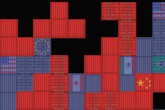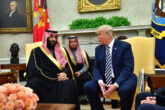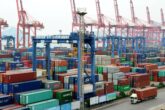September 14, 2022
Sand in the silicon: Designing an outbound investment controls mechanism
Read the full report from The Atlantic Council Economics Statecraft Initiative.
Recent congressional efforts to establish new authorities to regulate outbound investment have revived a long-simmering debate in Washington about the economic and security risks associated with US investment in China. The stakes for rethinking the investment relationship between the United States and China are high. China is the world’s second-largest economy and second-largest destination for foreign investment, after the United States. US firms have $118 billion in investments there. While foreign companies are increasingly pessimistic about the geopolitical risks associated with operating in China, the majority intend to stay in the market.
To ensure that new authorities are consistent with the United States’ commitment to open markets, support the global competitiveness of US business, and can be implemented effectively, an outbound investment mechanism must be narrowly targeted, clearly defined, non-duplicative of existing tools, scoped proportionately to administrative capacity, and paired with meaningful multilateral engagement with allies and partners.
Key policy recommendations include:
- Define a clear policy mandate.
- Focus outbound investment review authorities on slowing indigenous technology capabilities in China.
- Limit government action to those investments that present national security risks that cannot be adequately addressed under existing authorities.
- Implement a phased approach to outbound investment.
Phase one:
- Mandate notifications of a broad scope of outbound investments to better inform policymakers technology that meets technical specifications for items under US arms embargo.
- Disincentivize US investors from contributing to indigenous technology development in China by expanding the non-SDN Chinese Military-Industrial Complex (CMIC) list to target entities operating in critical sectors of concern, providing forward guidance on what limited set of critical technologies will result in a CMIC listing, and strengthen Securities and Exchange Commission (SEC) disclosure rules so that US investors must be more publicly transparent about their investments in China.
- Establish mirror-image investment controls for investments in Chinese companies developing technology that meets technical specifications for items under US arms embargo.
- Adopt a general policy of cross-listing entities placed on the Entity List and those on an expanded CMIC.
Phase two:
- Mandate investment screening for US investments in Chinese semiconductor entities, focusing on “smart money” investments made in chip design, fabrication, electronic design-automation software, and manufacturing equipment.
- Engage diplomatically with partners and allies to foster their development and implementation of similar, complementary mechanisms.
Download the Full Report
More from CNAS
-
Game Over?
The trade wargame suggests that sustained high tariffs could create leverage and urgency to spur action toward a productive restructuring of the international trade system....
By Emily Kilcrease & Geoffrey Gertz
-
Middle East Security / Energy, Economics & Security
Trump Inks $600 Bn Deal In Saudi Arabia | Musk, Blackrock CEO Flank Trump In Gulf VisitIn today's episode of India Global, U.S. President Donald Trump secured a $600 billion commitment from Saudi Arabia on Tuesday to invest in the United States. NDTV's Gaurie Dw...
By Daniel Silverberg
-
Energy, Economics & Security / Technology & National Security
Tariffs and Tech: An Uncertain RecipeHigher tariffs could prompt American cloud companies to shift more of their capital investments abroad....
By Pablo Chavez
-
Trump Tariffs: How Will U.S. Plans Reshape the Global Economy?
Donald Trump says he's already decided the tariffs he will impose on countries that export goods to America, including the United Kingdom. Channel 4 hears from Emily Kilcrease...
By Emily Kilcrease




